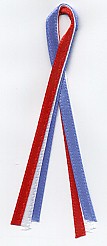Early Graduate Research (EGR)
Math 610: Early Graduate Research (EGR,
pronounced "eager") has been offered in the spring since 2008 by
various instructors.
This page describes the version led by Leslie Hogben five times in in 2008, 2011, 2014, 2017, and 2019.
During the 3-4 weeks of the semester I teach some of the
necessary background material and students read related research
papers. The group then splits into teams and each team begins
research on a problem, meeting weekly to discuss findings. Toward the end of the semester teams present their work in the Discrete Mathematics Seminar and paper(s) are written and submitted.
Prior EGRs
2019
The research problems were
on various
aspects of zero forcing, propagation time, and throttling. The
whole group worked on expected prpagation time for probabilistic zero
forcing and a subgroup worked on skew
throttling (both papers have appeared).
2017
The research problems were
on various
aspects of the inverse eigenvalue of
a graph, zero forcing, and related parameters. Groups worked on graphs with
maximum nullity equal to zero forcing number, the minimum number of
eigenvalues of a graph, and throttling for positive semidefinite zero
forcing. Each group published a paper.
2014
The research focused on minimum rank for loop graphs. During that semester the group subdivided into smaller groups working
on different parts but came together to produce one paper, which has been published.
2011
The research problems were on positive semidefinite
zero forcing number. Zero forcing number is a graph parameter
related to minimum rank and also used by physicists in quantum control;
positive semidefinite zero forcing number is a variant.
During that semester the group subdivided into smaller groups working
on different parts but came together to produce one paper that has been published. This group
also spun off two subgroups, each of which published a paper.
2008
The research problems were on various
aspects of the minimum rank problem for symmetric matrices described by
a graph, with one group working on small graphs (and developing computational software) and the other working
on minimum rank over fields other than the real numbers. Both
groups published papers.
Papers
Skew throttling
E. Curl, J. Geneson, L. Hogben.
Australasian J . Combinatorics, 78 (2020), 117-190. arxiv (2109 EGR)
Using Markov chains to determine expected propagation time for probabilistic zero forcing
Y. Chan, E. Curl, J. Geneson, L. Hogben, K. Liu, I. Odegard, M. S. Ross
Electron. J. Linear Algebra, 36 (2020) 318-333 (2019 EGR)
Families of graphs with maximum nullity equal to zero forcing number
J.S. Alameda, E. Curl, A. Grez, L. Hogben, O'N. Kingston, A. Schulte, D. Young, M. Young.
Special Matrices 6 (2018) 56 – 67 [PDF preprint] (2017 EGR)
Applications of analysis to the determination of the minimum number of distinct eigenvalues of a graph
B. Bjorkman, L. Hogben, S. Ponce, C. Reinhart, T. Tranel. Pure Appl. Funct. Anal. arxiv (2017 EGR)
Throttling positive semidefinite zero forcing propagation time on graphs
J. Carlson, L. Hogben, J. Kritschgau, K. Lorenzen, M.S. Ross, S. Selken, V. Valle Martinez. To appear in Discrete Applied Mathematics arxiv (2017 EGR)
Minimum rank of graphs with loops.
C. Bozeman, AV. Ellsworth, L. Hogben, J.C.-H. Lin, G. Maurer, K. Nowak, A. Rodriguez, J.
Strickland. Electonic Journal of Linear Algebra 27 (2014) 907 – 934. (2014 EGR)
Computing positive semidefinite minimum rank for small graphs. S. Osborne, N. Warnberg. Involve: a journal of mathematics 7 (2014) 595–609. (2011 EGR)
Positive semidefinite zero forcing number.
J.Ekstrand, C. Erickson, H.T. Hall, D. Hay, L. Hogben, R. Johnson, N.
Kingsley, S. Osborne, T. Peters, J. Roat, A. Ross, D. Row, N. Warnberg,
M. Young. Linear Algebra and its Applications, 439 (2013): 1862 – 1874. [PDF preprint] (2011 EGR)
Note on positive semidefinite maximum nullity and positive semidefinite zero forcing number of partial 2-trees. J.Ekstrand, C. Erickson, D. Hay, L. Hogben, J. Roat. Electonic Journal of Linear Algebra, 23 (2012) 79-87 (2011 EGR)
Techniques
for determining the minimum rank of a small graph L. DeLoss,
J. Grout, L. Hogben, T. McKay, J. Smith, G. Tims. Linear Algebra and its Applications, 432 (2010) 2995–3001. arxiv (2008 EGR)
Universally
optimal matrices and field independence of the minimum rank of a graph L. DeAlba,
J. Grout, L. Hogben, R. Mikkelson, K. Rasmussen. Electronic
Journal of
Linear
Algebra 18 (2009) 403-419. (2008 EGR)
EGR 2019 announcement
Section: The graph theory EGR described here is Section C of Math 610.
Prerequisite: The prerequisite is some knowledge of graph
theory, and first and second year graduate students are particularly
encouraged to enroll.
Class meeting time/place:
The official class time is 2:10-5:00 PM Mondays in Carver 409.
The plan is for
all of us to meet during these 3 hours the first few weeks and then
split into two or more research groups (depending on how many students
there are) with each student involed in one group and attending two hours of research meetings
per week after that. The research group meetings will be
scheduled at mutual convenience (including the 2-5PM Monday, but other
times are also possible).
Topic: During Spring 2019 students will work on questions related to graph
searching, the time needed to complete the search, and a combination of
resources used to accomplish the task and time needed to accomplish the
task (throttling). Parameters that may be studied include zero
forcing, power domination, cops & robbers, metric dimension, etc.





